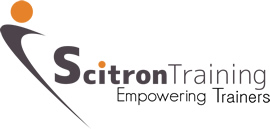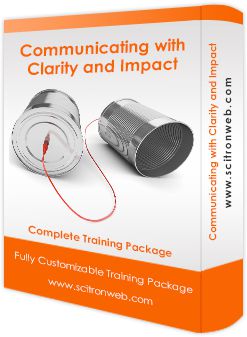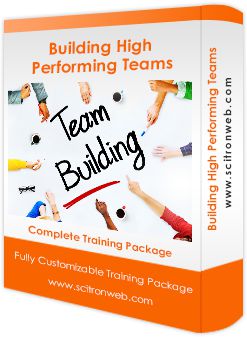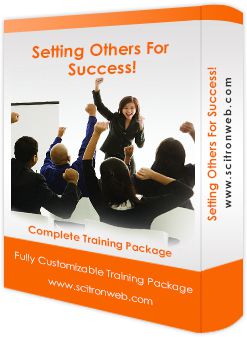Many sales people fall into the trap of attempting to close the sale too soon and risk scaring off their customer and losing the whole opportunity to make the sale. In this article, we’ll look at the proper sequence of managing a series of rational and orderly events within a sales interaction.
How can you know when it's time to close the sale?
Imagine that a salesperson has worked on a major opportunity for 4 months. Let’s imagine further that a CustomerCentric Selling sales consultant is hired to analyze each sales opportunity in the pipeline, and the consultant asks the salesperson to estimate when this particular opportunity will close. For the purposes of this example, let’s assume the CustomerCentric Selling sales consultant knows the decision maker on this transaction, and can ask him or her to provide a date when the sale can be made.
What is the likelihood that the buyer’s date will be later than the seller’s date?
Most closing is driven by the agenda of the sales organization, with little or no regard for the buyer. Many organizations that are under pressure to meet monthly, quarterly, or annual targets resort to “blitzes” to bring in business, based on those internal pressures.
The vast majority of closing occurs before the salesperson has earned the right to ask for the business. When salespeople attempt to close orders before buyers are ready, they run the risk of being perceived as a traditional pushy salesperson—or, worse, of scaring the buyer off entirely.
If a salesperson closes before a buyer is ready, discounting is the most common method of giving the buyer a reason to sign early. In these premature efforts to close, a great deal of negotiating is done with non-decision makers. This can be demeaning for buyers who can’t commit. In some instances, the discount offered to non- decision makers becomes the starting point for the real negotiations.
In our sales workshops, we sometimes ask participants, “How can you know when a transaction is closeable?” There is almost always a prolonged silence, as people realize that this question is not readily answerable with their current approach. In fact, many organizations (buyers and sellers) view the sales cycles as random series of events that sometimes result in orders. Salespeople push buyers to go through the sales cycles without gaining consensus or commitment. Many salespeople do not ask for, and therefore fail to get, access to the people within the prospect organization who will be required to sell, fund, and implement the recommended solution. How many “opportunities” in your current pipeline?
Have at least one documented buyer goal?
Just as a competent chess player thinks several moves ahead, salespeople should do the same as they attempt to facilitate the buying process. Despite the fact that every sale appears to be unique, based on the size of the transaction and the size of the prospect organization, there are many common steps in the buying process that have a high probability of recurring.
By agreeing to and adhering to a clear sequence of events, the salesperson provides documentation that allows sales management to continue auditing and grading opportunities., this removes overoptimistic opinions from the forecast, and minimizes the phenomenon of salespeople “selling” their managers on how good their pipeline is. When they make their Sales forecasts, sales managers should have the benefit of a piece of paper that shows a planned sequence of events for each potential sale, and what progress has been made in that sequence.
By documenting sales efforts and gaining commitment to sequences of events, sales managers can play a vital role in deciding what deserves to be in each pipeline. As soon as an opportunity does not look winnable, the sales manager should brainstorm with the salesperson as to how to change the landscape of the decision.
When documented by means of a clearly stated Sequence of Events, the process of controlling a sales cycle begins to resemble project management. The decision process embedded in a sales cycle has a defined beginning and end, and—as noted above—the selling organization has the ability to assess progress and probabilities of success throughout.
There’s also an ancillary benefit: When the seller handles sales cycles in a highly professional selling manner, buyers are likely to conclude that the selling organization’s implementation will be professional, as well. This perception can allow buyers to feel more comfortable with a given company, and especially with a relatively untested company selling complex offerings. We believe salespeople and the companies they represent can make the way they sell a competitive advantage and a differentiator.
Getting the Commitment
The first step, of course, is getting the commitment from the buying customer to move forward with the evaluation of the offering. Prior to committing to a buying cycle, salespeople should meet with all Key Players to understand their issues, determine if their offering represents a fit for the buyer’s environment, establish potential value, and gain consensus that a formal evaluation makes sense. Key Players should understand what’s in it for them. They should then come to some consensus and agreement on
(1) the steps needed to reach a decision and
(2) the timeframe for the overall evaluation.
Now it’s time to move the process forward. To do so, the salesperson has to orchestrate getting all the key people together. The seller has to summarize progress to date and verify that the buyers feel there is enough potential benefit that further investigation is warranted. Finally—and most important—the seller has to obtain a commitment to proceed.
At some point in this process, the seller with the right professional selling skills may attempt to push toward a commitment by pointing out a fact that should be obvious, but often isn’t: By taking the time to evaluate this particular offering, the buyer is making a serious commitment of time, resources, and effort. Yes, the seller has a lot at stake, but the buyer, too, has money on the table, and that pile of chips is only growing. (Of course, the seller can be prepared to point out the cost to the buyer of not moving, as well.)
Looking for a commitment benefits the selling organization in several ways. First, it continues the qualification process.
(If this opportunity is going to fizzle, let’s find out sooner, rather than later.) Second, the selling organization wants to shape the sales cycle as much as possible. Simply put, would you rather sign a lease prepared by your landlord, or one prepared by you?
Schedule a meeting to get a commitment
Looking for a commitment doesn’t always succeed. A salesperson selling enterprise software recently told us about his attempts to obtain agreement on a $100,000 opportunity that he was working on. The VP of Engineering and the CIO were in favor of committing the resources necessary to work with the vendor. The VP of Manufacturing, though, had a track record of having difficulty with implementing technology, and was known to be a potential Adversary. Sure enough, during the meeting designed to gain consensus, the whole deal came unraveled, as the VP of Manufacturing argued passionately, and ultimately succeeded in convincing everyone, that it was “not the right time” to consider new software.
So is our recommendation—scheduling a meeting to extract a commitment from the organization—a bad idea? We don’t think so, because we believe that in sales, bad news early is actually good news. Would you rather learn that the “opportunity” is a pipe(line?) dream in month 1, or in month 6, after you have expended a great deal of time and resources, and have been carrying it on your forecast as having a high probability of closing?
Negotiating a sales sequence of events
In some cases, of course, buyers will continue to press for a better deal, and getting the order will require more than posturing—it will require real negotiation skills. In real negotiation, there are two key components: get and give. Note the nontraditional sequence of these two words, which is deliberate: get, then give.
Throughout the buying cycle, as noted above, the seller should be trying to establish an atmosphere of quid pro quo. This is sometimes hard to sustain, since the buyer has been conditioned to wield disproportionate power with traditional vendors and sellers. But when the seller is offering a way for the buyer to achieve a goal or solve a problem, he or she doesn’t deserve to get run roughshod over. Prior to giving, therefore, the seller should first ask for something from the buyer. Why?
Because if the seller offers a concession, the buyer will take it and still want a lower price.
The psychology is to convince the buyer that he or she is getting the best possible deal. If the buyer first has to make a concession, the seller’s concession will appear to have more value. If the buyer will not agree to a concession, the seller should leave without offering what he or she was willing to give, and without burning the bridge. Getting the buyer’s commitment first allows a conditional “give.” This empowers the seller either to get an order or to leave without setting a lower number that will become the basis for subsequent negotiating meetings.
There are many different things a seller can ask for. Our suggestion is that it be something that is of value to the seller that causes the buyer to “put some skin” into the negotiation. Examples could be A deposit up front, with the balance due in 30 days or a larger transaction (accelerating the order of future requirements), A longer lease term or maintenance commitment, A press release documenting results..etc.
It should be noted that the seller cannot ask the buyer to commit to providing the “get” that is requested. The question is whether it would be possible for the buyer to do what is being asked. For example:
Seller: For me to consider a concession, I need something from you.
Buyer: What do you have in mind?
Seller: Would it be possible to extend the maintenance contract from 1 year to 2, and for you to serve as a reference for four prospects over the next 12 months?
Buyer: I don’t see a problem with extending the maintenance agreement. And, assuming our implementation is successful, l could serve as a reference for you.
Seller: If you extend the maintenance agreement and agree to be a reference, I’m willing to include our forecasting module, which has a value of $10,000, at no additional cost. Would you like to move forward?
Buyer: Is that the best you can do?
Seller: It is. Can we move forward?
Buyer: Make the changes to the agreement, and let’s go ahead.




















